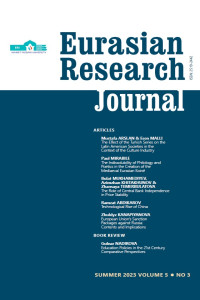Abstract
Philological methods of analysis are not only perfectly congruous with reflections of a poetic order, but especially in the comprehension of a mediaeval epic tale, western or eastern. Philology practised as the art of unveiling images behind sounds and forms, figures and structures, communicates poetically, thus significantly the polyphonic import of the mediaeval epic tale. To defend this philological-poetics experience this paper compares the Turkic Dede Korkut Kitabı with the Armenian David of Sassoun, the poetic structures of the Tamil Periya Puranam, the iconic singularity of the Chinese Ji Bu Ma Zhen (Ji Bu Insulting the Enemy) and the Byzantine Digenis Akritas set within an Anatolian sub-koinê landscape with the Book of Dede Korkut and David of Sassoun. Homage has been rendered to three philologists whose philological training and academic works led them to the most extraordinary poetic works of art: F. Nietzsche, P.P. Pasolini and J.R.R. Tolkien.
Details
| Primary Language | English |
|---|---|
| Subjects | Studies of the Turkic World |
| Journal Section | Research Articles |
| Authors | |
| Publication Date | August 31, 2023 |
| Published in Issue | Year 2023 Volume: 5 Issue: 3 |


